Introduction
Tropical rainforests are woodlands around the equator with a lot of vegetation that is evergreen. It is very warm and rain falls throughout the year.
Although only 7 % of the land surface are covered with rainforests, more than half of the world’s plants and animal species live there.
Rainforests are very important for human beings. Plants produce food and medicine, and we get industrial products out of some of them. Trees produce timber, help control the earth’s climate and supply us with fresh air.
Despite these advantages, people cut down thousands of square kilometres of rainforest every year.
Half of the world’s rainforests can be found in the Amazon River basin in South America. Smaller rainforests lie in Central America and southern Mexico. The western part of Africa has about 2 million square kilometres of rainforest in and around the Congo River basin. Rainforests in Asia are found in southern India, Malaysia and on many Indonesian islands.
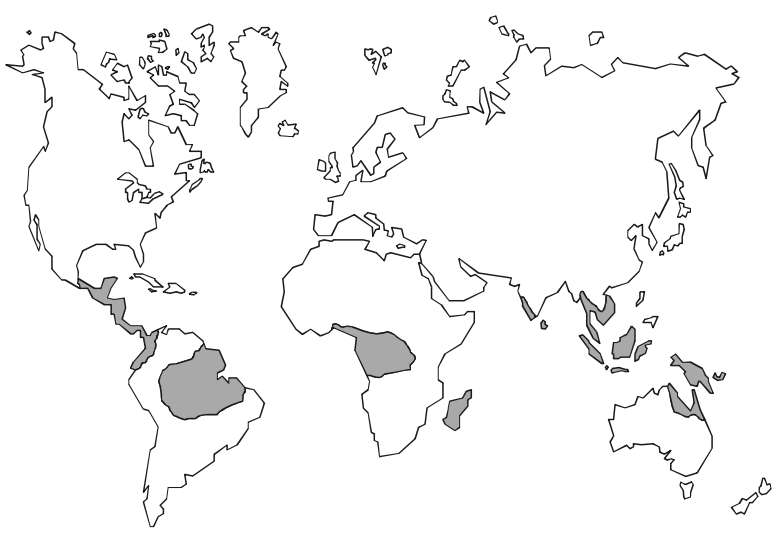
The world’s tropical rainforests
Climate
Temperatures stay the same the whole year round—about 20 to 30 degrees Celsius.
Around the equator there are two rainy seasons with heavy rainfall — up to 10 metres. When you move away from the equator, it gets a bit drier in some months , but there are still more than 2 metres of rain a year.
The weather hardly changes from one day to the next. In the morning it is clear . The sun starts heating up the ground and warm, humid air starts to rise. In the afternoon, clouds get darker and there are thunderstorms for an hour or two before it starts to clear up again .
Most of the rain stays in the rainforest . It evaporates , creates clouds and comes down again.
Rainforest soils are not very fertile because the rain washes out most of the nutrients.
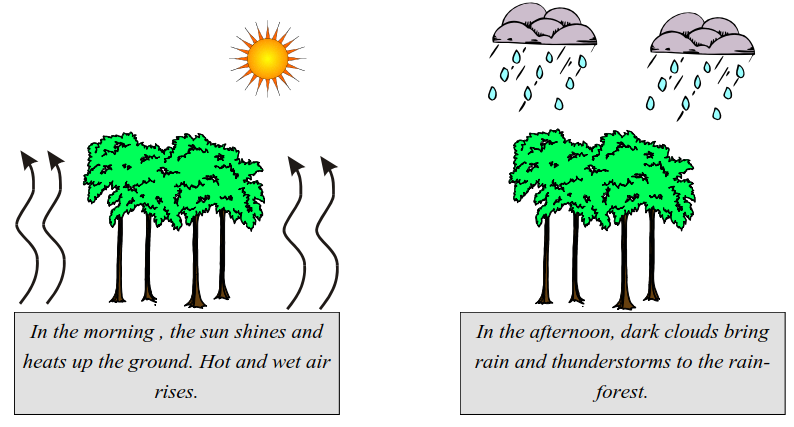
Structure of the Rainforest
Rainforests have four layers.
- The top layer is the canopy. It consists of the tallest trees of the rainforest. They may get over 50 metres tall. But only very few reach this height. This is the part that gets most of the sunlight.
- The subcanopy is a layer of trees that is below the canopy. More than 70 % of rainforest animals and plant species live in the canopy and subcanopy. Lianas often climb around trees.
- The understory is the shadowy lower area. It has young trees and plants like ferns or palms that do not need much light. Only 1 or 2 per cent of the sunlight reaches the understory.
- The floor has a thin layer of leaves, seeds or fruits and branches that fall from the trees. It decomposes fast, and new material takes its place.
When large , tall trees die and fall to the ground, they leave a gap in the rainforest. Very quickly, smaller trees take this place and their crowns grow larger. That’s why the layers of the rain forest always change.
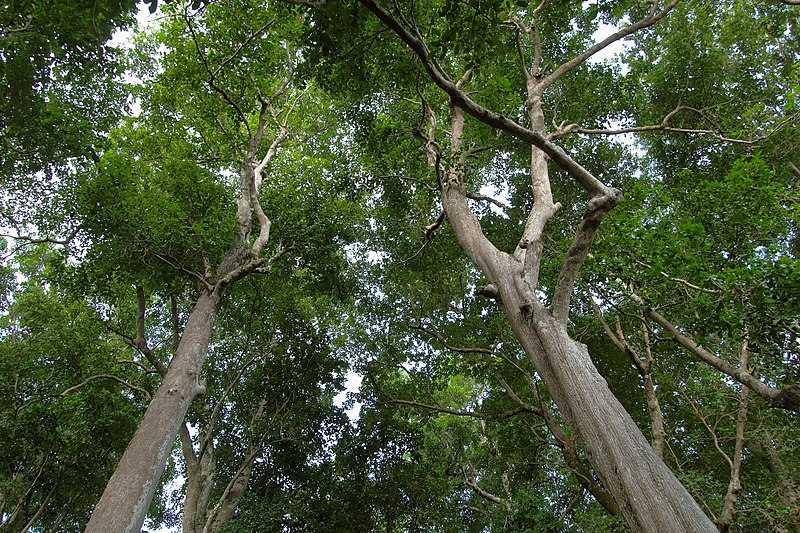
Rainforest canopy on the Andaman Islands in the Indian Ocean
Image : © Vyacheslav Argenberg / http://www.vascoplanet.com/, CC BY 4.0,
via Wikimedia Commons
Plants of the Rainforest
About half of the world’s plant species can be found in the rainforest. Because it is warm and rains the whole year, forests stay green. Trees lose their leaves and immediately grow new ones. The rain forest is the home of many plants : lianas, ferns, orchids and many kinds of tropical trees.
Palm tree
Palm trees grow in the hot and wet climate of the tropics. They give us food, drink and sometimes building material. Most palm trees are found in Southeast Asia, South America and on islands in the Pacific.
There are over 2,000 kinds of palms. They grow straight and tall and most of them carry fruits, like the coconut.
Rubber tree
Rubber is one of our most important raw materials. Natural rubber comes from the juice of the rubber tree. It grows best in hot climates. The tree can be about 20 metres tall. It has smooth, shiny leaves. A white, milky fluid comes out of the bark if you cut into it. This is called latex.
Today, most rubber comes from plantations in Southeast Asia.
Orchid
Wild orchids grow in places with a lot of rainfall. Most species grow on trunks or branches of trees. In cooler regions, orchids are grown in greenhouses. Most of them grow in a mixture of fascinating colours.
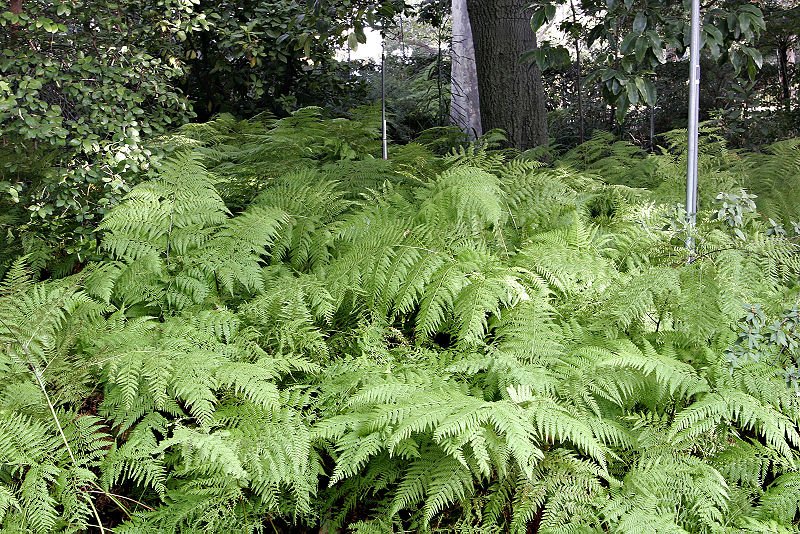
Ferns at Melbourne Botanical Gardens
Image : fir0002 flagstaffotos [at] gmail.com Canon 20D + Tamron 28-75mm f/2.8, GFDL 1.2,
via Wikimedia Commons
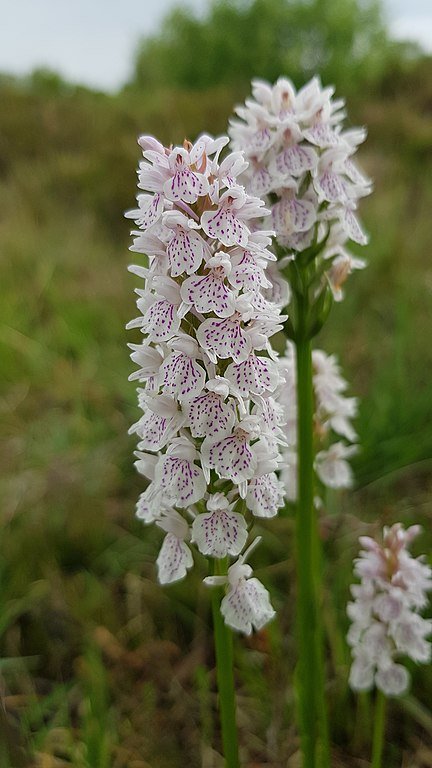
White orchid
Image : Niall Kearney, CC BY-SA 4.0,
via Wikimedia Commons
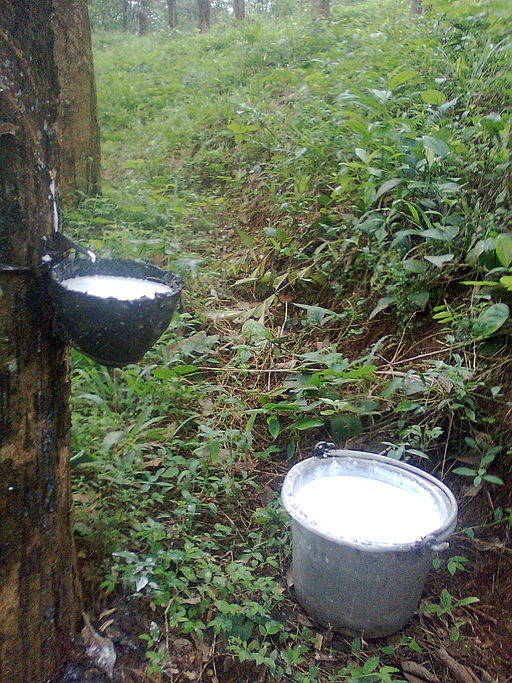
Latex collected from a rubber tree
Image: Irvin calicut, Public domain,
via Wikimedia Commons
Animals of the Rainforest
Fish, reptiles, birds and insects also live in the rainforest and its rivers. Plants and animals need each other to survive. Insects pollinate the flowers of the rainforest. Animals get food from the flowers’ nectar. Seeds from trees are often taken away by other animals and birds and dropped in faraway areas.
Piranha
The piranha is a fish with sharp teeth that lives in the lakes and rivers of the Amazon . It attacks and eats other fish and water animals. In some cases, it even attacks humans. Piranhas have flat bodies and can grow up to 30 cm long.
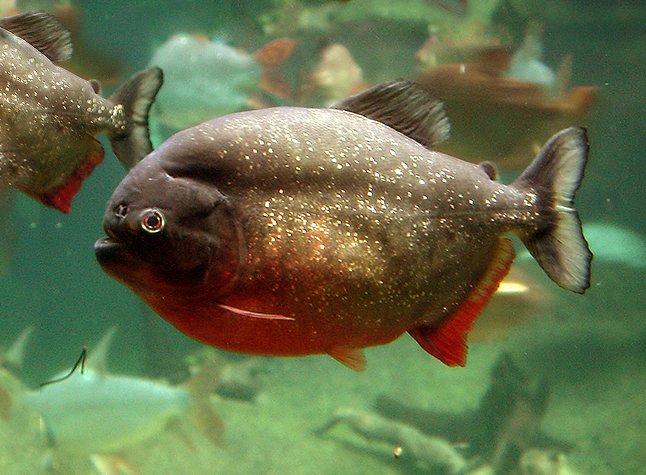
Toucan
Toucans are typical birds of the tropical rainforests. They have big and long bills that are brightly coloured , so that they can attract other birds. The largest toucans can get up to 65 cm long. Most of them live in hollow trees.
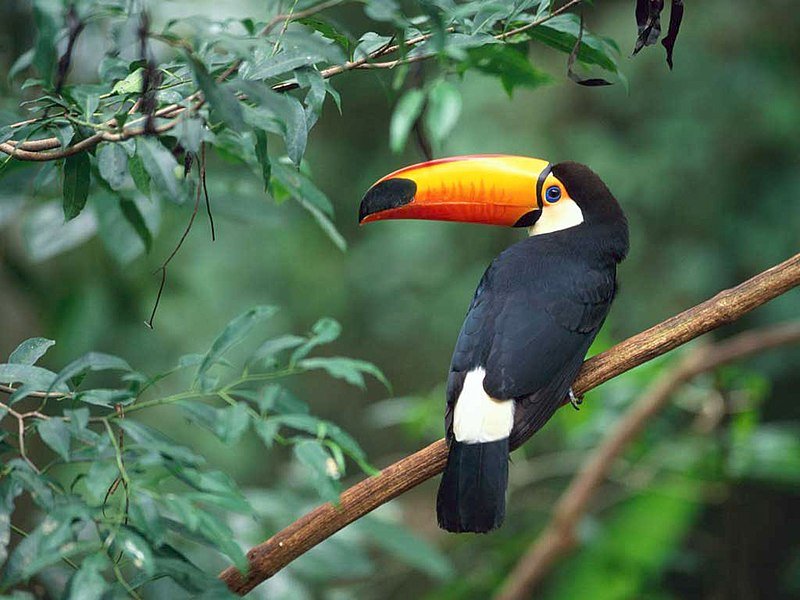
Toucan
Image : Basa Roland, CC BY-SA 3.0,
via Wikimedia Commons
Gorilla
Gorillas are the largest members of the ape family. They have huge shoulders, long arms and short legs. They may weigh up to 200 kg.
Gorillas live in Africa near the equator. Although most of them live in the lowlands, there are some highland types.
People have hunted gorillas for a long time . As a result, they have become very rare and only about 1,000 gorillas live in the wild today.

Gorilla at Detroit Zoo
Image : RedGazelle15, CC BY-SA 4.0,
via Wikimedia Commons
Value of the Rainforest
People benefit from the rainforest in many ways :
- Economic value – Wood is the most important product of the rainforest. About 80 % of it is used for energy and 20 % is sold to make furniture. The forests produce other valuable goods like fruits, nuts, different kinds of oils and rubber.
- Scientific value – Scientists study the rainforest as an ecosystem. They learn a lot about how plants and animals live together. Tropical plants are used to cure diseases like malaria.
- Environmental value – Rainforests help to regulate our environment. Trees control the water that reaches the ground. They also take up a lot of rain. Much of this water evaporates and gets into the atmosphere again as vapour. Then it turns into rain and comes down to earth. Without rainforests, floods and droughts would be very extreme. Rainforests also help our atmosphere from becoming too warm.
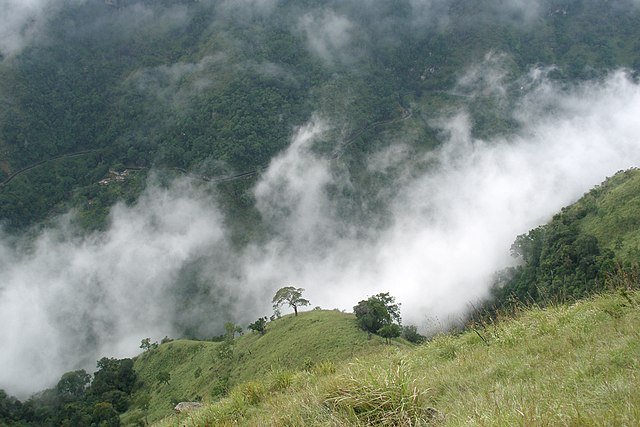
Fog produces water vapour, which returns into the atmosphere
Image: Vyacheslav Argenberg (http://www.vascoplanet.com/), CC BY 4.0,
via Wikimedia Commons
People of the Rainforest
Most of the world’s rainforests are populated by indigenous people. These are people who have been living there for thousands of years . They depend on the rainforests for survival. Some people live in places that you can get to only by boat.
Many people collect fruits, nuts and firewood. They hunt and fish for food to stay alive. They burn down small areas of rainforest and grow crops there. When the soil gets too bad , they go to other places and plant new crops. This method of farming is called shifting cultivation.
Today, the living areas of these indigenous tribes are in danger, because other people have come here to chop down trees, raise cattle or mine gold and silver.
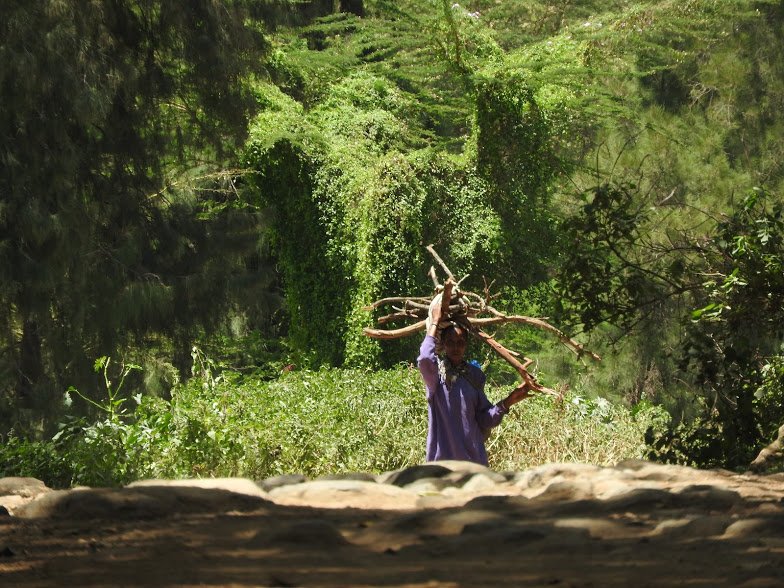
Woman collecting firewood in the rainforest
Image: Micleone88, CC BY-SA 4.0,
via Wikimedia Commons
Deforestation
People are destroying the world’s rainforests at a very fast rate. One of the reasons is deforestation. More and more trees are cut down every year because
- the world’s population needs more and more wood
- people in the tropical rainforest need energy. They can’t buy oil or gas because it’s too expensive.
- governments find valuable raw materials in these areas — like iron ore, gold or silver.
- dams are built along tropical rivers.
- big companies get land to grow meat and produce food.

Deforestation in the tropical rainforest
Image : Dikshajhingan / CC BY-SA 4.0
Videos
Exercises
Word Search
Printable Downloads (PDF)
Writing Tasks
As a junior citizen, you are very worried about the destruction of the world’s rainforests. Write an email to your local representative and tell him your view of this problem.
In your email you should
- ask if your government is doing anything to cope with the problem
- make suggestions on how rainforests can be saved
- suggest ways of helping people who live in the rainforests
Write about 200 words.
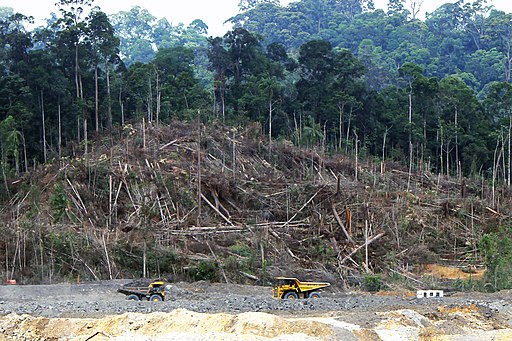
Deforestation in Borneo
IndoMet in the Heart of Borneo, CC BY 2.0,
via Wikimedia Commons
You are a member of an expedition team travelling through the Amazon rainforest. You have decided to keep a diary and write down what you have seen in the two weeks you have travelled. Write at least 2 diary entries.
In your entries, you should write about
- the plants and animals you have seen
- the weather you have experienced
- the native people you have met and how they live